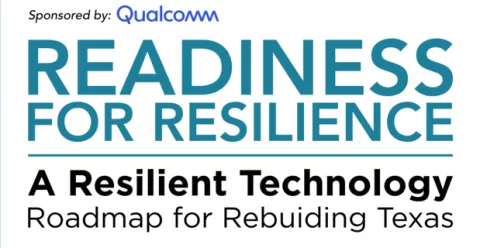
By Steve Crout, Director, Policy & Resilience Program, Smart Cities Council Resilience – the ability to recover easily and quickly from difficulties – has been in the headlines this year for all the wrong reasons. More natural disasters. More man-made attacks. More failures by governments to give timely help to victims. All the more reason to pay attention to the learnings from the two most recent Readiness for Resilience workshops in Texas, which revealed six best practices other communities can apply to their own resilience initiatives. Our efforts were sponsored by Qualcomm and our team included Texas A&M, BSCE and NASEO. The Council conducted these workshops with communities still recovering from Hurricane Harvey. As we did so, another tropical storm (Barry) was bearing down on the Gulf Coast. These communities are facing the potential of another disaster, yet have still not received funds to rebuild from the last one. We have to change our approach to resiliency. We have to change to a pro-active approach that focuses less on talking and more on doing. If you’d like to spur more action in your own community, review the lessons learned in Texas. Workshop background. The Readiness for Resilience program is designed to assist Texas communities impacted by Hurricane Harvey rebuild their infrastructure with smart, resilient technologies. The program kicked off with three Discovery Workshops December 11, 12 and 13 2018 in the Texas counties of Harris, Orange and Aransas. These grassroots workshops were held in impacted communities to hear firsthand how local officials and residents dealt with Hurricane Harvey before, during and after. The Discovery Workshops helped identify the specific rebuilding needs of the local communities. From there, the program moved on to workshops July 9 and 11 2019 in Houston and Port Aransas. Workshop attendees were provided a detailed summary of the projects recommended in the Resilience Roadmap. In addition, attendees heard from experts on how to establish public private partnerships, including real case studies. Finally, attendees heard directly from state and local funding agencies regarding available disaster assistance. Community leaders, technology experts and other stakeholders were then asked to participate in working groups and run through a series of exercises to pave the way for development of ebuilding projects. This included exercises to identify appropriate public-private-partnerships, roles and responsibilities, partner risks and rewards and more. Finally, to accelerate resilience projects, attendees ran through and exercise to help identify potential available federal, state and local funding streams to develop resilience projects. Here are six lessons from the Readiness for Resilience program cities and state can adapt: 1. Build a national/regional coalition. The Readiness for Resilience program provides a template for collaboration. The Smart Cities Council, a global organization, organized and facilitated the workshops. National partners included the Business Council for Sustainable Energy and the National Association of State Energy Officials. Regional leadership was provided by Texas A&M AgriLife Extension, which has been appointed by Texas Governor Greg Abbott to run the state’s recovery effort. The program is sponsored by Qualcomm with support from Swan Island Networks. 2. Build side-by-side with the communities. Readiness for Resilience is not a top-down program that imposes solutions from on high. Instead, it starts with Discovery Workshops held in the communities themselves and open to a wide range of stakeholders. 3. Build back better. If a city hopes to withstand future setbacks, it cannot be content just with replacing old-fashioned infrastructure. The overriding goal of Readiness for Resilience is to enable the deployment of smart technology projects to assist communities rebuild their infrastructure with enhanced resiliency. 4. Build smart from the start. The workshops included discussions on innovative technologies that can be integrated into hurricane rebuilding projects to amplify resilience beyond traditional infrastructure. 5. Take a phased approach. The program has three essential phases:1) Uncover local rebuilding needs2) Match local needs with resilient technology solutions and best practices3) Match solutions with funding streams and private sector partners 6. Move from conversation mode to action mode. Once you’ve matched needs with potential solutions, it’s essential to move from what could be done someday to what should be done next. The information gained from the Discovery Workshops was used to develop an abbreviated “Resilience Roadmap” – see below for link – which contains 18 rebuilding projects/recommendations. The full Resilience Roadmap will be released shortly. The work being done today is just the beginning of what the program partners hope will be a multi-year engagement throughout the rebuilding process. Community leaders meeting face-to-face with technology experts and citizen stakeholder groups exchanging knowledge, experience, concerns and aspirations – that is the essence of partnership. And the path to recovery and rebuilding with smart, resilient technologies. Steve Crout is the Director of Policy and Resilience Programs at the Smart Cities Council and an expert in building strategic public-private partnerships. He can be reached at Steve.Crout@SmartCitiesCouncil.com.
Resources:



